
Introduction
For the past two years, the “hybrid” war with the Russian Federation continues in the East of Ukraine. The Ukrainian government classifies Russia's actions as an act of direct aggression and calls on the international community to recognize the fact of aggression. But Russia denies its direct involvement in the war in the East of Ukraine, denies the act of aggression and persistently tries to persuade the international community that in Ukraine there is a civil war. In this case, it is advisable to refer to international law, the task of which is to resolve disputes between states and to establish peace and security. The first step to a legal settlement of the military conflict with Russia in the East of Ukraine is classification of the Russian Federation's actions in the Donbas as an act of aggression on the basis of international law.
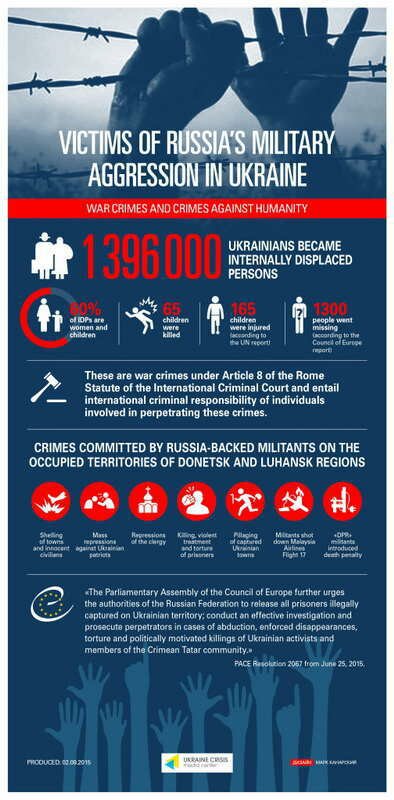 1. Classification of Russia's actions in the Donbas as an act of aggression
1. Classification of Russia's actions in the Donbas as an act of aggression
Article 2 of the UN Charter defines the obligations of states to refrain in international relations from the threat or use of force against the territorial integrity or independence of any state.
The body in the UN system responsible for the maintenance of international peace and security, on the basis of Article 24 of the Charter is the United Nations Security Council. It is the Security Council that determines the existence of any threat to the peace, breach of the peace, or act of aggression in accordance with Article 39. However, the Charter does not contain a definition of aggression, under which the Security Council can characterize the actions of the state as an act of aggression.
The definition of Aggression was given only in 1974 in UN GA Resolution. It recognizes as an act of aggression the following actions:
- The invasion or attack by the armed forces of a State of the territory of another State, or any military occupation, resulting from such invasion or attack, or any annexation by the use of force of the territory of another State or part thereof.
- Bombardment by the armed forces of a State against the territory of another State or the use of any weapons by a State against the territory of another State;
- The blockade of the ports or coasts of the state by the armed forces of another State.
- An attack by the armed forces of a State on the land, sea or air forces, or marine and air fleets of another State.
- The use of armed forces of one State which are within the territory of another State with the agreement of the receiving State, in contravention of the conditions provided for in the agreement or any extension of their presence in such territory beyond the termination of the agreement;
- The action of a State in allowing its territory, which it has placed at the disposal of another State, to be used by that other State for perpetrating an act of aggression against a third State;
- The sending by or on behalf of a State of armed bands, groups, irregulars or mercenaries, which carry out acts of armed force against another State.
The definition of aggression similar to the provided by UN GA Resolution 1974 is also in the Rome Statute of the International Criminal Court. In 2010, at a Conference on the revision of the Rome Statute in Kampala (Uganda), a resolution was adopted formulating the definition of a “crime of aggression” and the conditions under which the Court should exercise jurisdiction towards this crime. However, the Resolution will enter into force only in 2017.
According to the Resolution “Definition of Aggression”, the forceful actions of the Russian Federation against Ukraine on the territory of its Donetsk and Luhansk regions has all the features, defined by Paragraphs 1 (Russian Federation carried out an armed attack on the territory of Ukraine), 2 and 4 (it uses from its territory different types of weapons against Ukraine) and 7 (was sending armed gangs, groups of mercenaries to the territory of Ukraine). To confirm Russia's conduction of such acts of aggression, let us consider the situation in the East of Ukraine in May-August 2014.
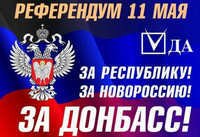 In May 2014 on the territory of Ukrainian Donbas, armed groups announced the creation of “DPR” and “LPR” and organized sham referendums.
In May 2014 on the territory of Ukrainian Donbas, armed groups announced the creation of “DPR” and “LPR” and organized sham referendums.
For this purpose to the territory of Ukraine were sent reconnaissance and sabotage groups, headed by career officers of the Main Intelligence Directorate of the General Staff of the Russian Armed Forces, paramilitary forces of the Russian Cossacks and the staffed by Chechens-citizens of the Russian Federation sadly-known Battalion Vostok, and also were involved such armed groups of mercenaries as the Russian Sector and the Oplot. With their participation were captured administrative buildings in many towns in Donetsk and Luhansk regions, there were attacks against units of the Ukrainian Army and military equipment of the Air Forces of the Armed Forces of Ukraine. Under the control, management and financing of the Russian Federation, the armed formations used in the aggressive war against Ukraine, were regularly remanned with Russian mercenaries from among retired military servicemen of the Armed Forces of the Russian Federation. They were given weapons and military equipment, including tanks, artillery systems, anti-tank equipment and modern anti-aircraft missiles.
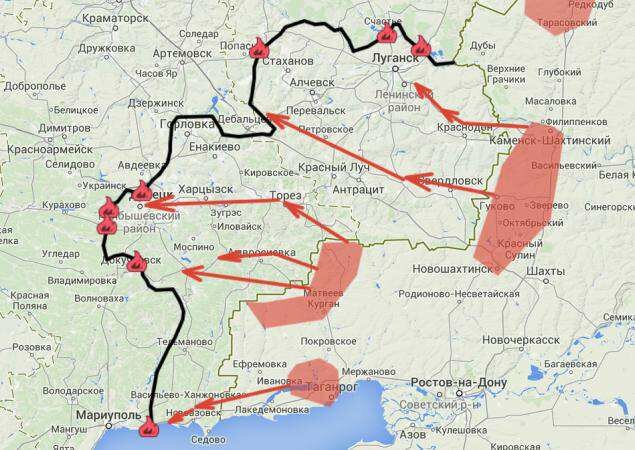 In late August 2014, there began a massive invasion onto the territory of Donetsk and Luhansk regions of regular units of the Russian Armed Forces, in particular, of parts of the 9th Separate Motorized Rifle Brigade, 76th and 98th Divisions of the Airborne Troops of the Armed Forces of the Russian Federation. During the actions of the regular Armed Forces of the Russian Federation in the armed aggression against Ukraine, among the population of Ukraine there were distributed propaganda postcards in particular, with the following appeal: “Do not, under any circumstances, resist the movement of Russian troops (equipment and personnel)”. At a meeting of the UN Security Council August 29 in connection with the aggression of the Russian Federation, representatives of Ukraine said, “Russia has begun a direct military invasion of the mainland Ukraine using its regular Armed Forces”.
In late August 2014, there began a massive invasion onto the territory of Donetsk and Luhansk regions of regular units of the Russian Armed Forces, in particular, of parts of the 9th Separate Motorized Rifle Brigade, 76th and 98th Divisions of the Airborne Troops of the Armed Forces of the Russian Federation. During the actions of the regular Armed Forces of the Russian Federation in the armed aggression against Ukraine, among the population of Ukraine there were distributed propaganda postcards in particular, with the following appeal: “Do not, under any circumstances, resist the movement of Russian troops (equipment and personnel)”. At a meeting of the UN Security Council August 29 in connection with the aggression of the Russian Federation, representatives of Ukraine said, “Russia has begun a direct military invasion of the mainland Ukraine using its regular Armed Forces”.
Therefore, these facts are a direct proof of Russia's use of acts of aggression, subject to the provisions of the Resolution “Definition of Aggression”, as noted above. Based on them, referring to UN GA Resolution of 1974, the Verkhovna Rada of Ukraine in January 2015 recognized Russia an aggressor.
2. Classification of Russia's actions as an act of indirect aggression (similar to Nicaragua case)
UN GA's Resolution “Definition of Aggression” of 1974 clearly defines the indirect aggression as an act of aggression, namely: the sending by or on behalf of a State of armed bands, groups, irregulars or mercenaries, which carry out acts of armed force against another State of such gravity as to amount to the acts listed above, or its substantial involvement therein. That is, meaning keeping an undeclared war using irregular troops and mercenaries, terrorists, saboteurs, and the like. It is exactly this type of war that Russia is waging against Ukraine.
In the history of international relations is already known fact of indirect aggression — the conflict between the USA and Nicaragua. It was the International Court of Justice that was an arbitrator in the case of “Nicaragua against the United States” and decided that the United States were responsible “for the planning, direction and support” of Nicaraguan guerrillas (Contras).
The ICJ's decision in the case “Nicaragua against the United States” can serve as a basis for the international legal assessment of the actions of Russia in the East of Ukraine. After all, decisions of the ICJ are recognized a source of international law in accordance with paragraph “d” of Article 38 of the Charter of UN ICJ. Both Ukraine and Russia have recognized the practice of the ICJ as a source of international law at both, doctrinal and political levels.
In its decision in the Nicaragua case UN ICJ made a decision that:
• sending armed groups can be seen as an armed attack (confirmation of the definition of indirect aggression);
• assistance to rebels, in particular, providing them with weapons, can be a threat of use of force (material assistance to rebels may be treated as illegal interference in accordance with paragraph 195 of Nicaragua decision).
UN ICJ, having studied the facts of arms and equipment supplies, training of the Contras, the American instructors' staying among them, military support in the form of supplying with intelligence, recognized the USA responsible for the violation of international law, namely, for the support of the Contras and their terrorist activities against and in the territory of Nicaragua, for interference in the internal affairs of Nicaragua and a violation of its sovereignty.
Let's make a comparative analysis of the conflicts: the United States-Nicaragua and Russia-Ukraine, in order to find out common grounds for qualification of the USA's and Russia's actions, respectively, as acts of aggression.
Table 1. Comparison of actions of indirect aggression of the USA and of Russia
|
The Format of Support |
Nicaragua |
Eastern Ukraine |
|
Command |
Participation of the US instructors, possibly the leading role of the CIA |
Many militants, especially, commanders, are Russian citizens and former military servicemen of the RF special services, for example, Girkin-Strelkov |
|
Financing |
Allocation of funds to support the Contras |
There is evidence of a Russian Communist Party financing the terrorists |
|
Training |
Training of Contras by American instructors (CIA); there were no training camps on the territory of the USA |
Presence of Russian specialists directly among the terrorists, but non-recognition of their actions as commanded by the RF; training of the militants in Russia' camps in the Crimea |
|
Weapon supplies |
The weapons and ammunition were supplied mainly by the USA |
There are no proved facts of supplies, but the terrorists have a lot of purely Russian weapons and ammunition; the ways of supplying are not known and not proved |
|
Sending |
No sending from the USA |
From Russia — letting fighters, military equipment, weapons get from its territory to the territory of Ukraine; Russian military servicemen's participation (though “voluntary”) |
|
Combat support |
On the part of the USA — intelligence, in particular, radar reconnaissance; using warships of the US Navy in moving Contras and their mining ports of Nicaragua |
On the Part of Russia — intelligence, in particular, radar reconnaissance and supplying with drones, though these actions have not been proved; recently there was evidence of missile strikes and even air strikes from the territory of Russia |
|
Propaganda, other actions |
Military trainings of the Armed Forces at the border, warning about a possible attack, — this was creating pressure |
Military trainings of the Armed Forces at the border, provocative air violations, reports of a possible attack — all this was creating pressure |
 Regarding the use of weapons, Paragraph 91 of the UN ICJ states that the Contras used for the needs the planes (non-combat) provided to them by the United States. There is considerable evidence of terrorists' using Russian-made military equipment provided by Russia, although it usually explains the terrorists' having weapons similar to Russian ones, is due to their having stolen weapons from the Ukrainian Army's warehouses in the Donbas. According to one of the advisers to the Chief and ideologist of the “DPR” and “LPR” Sergey Kurginyan, Russia has been supplying terrorists with modern weapons.
Regarding the use of weapons, Paragraph 91 of the UN ICJ states that the Contras used for the needs the planes (non-combat) provided to them by the United States. There is considerable evidence of terrorists' using Russian-made military equipment provided by Russia, although it usually explains the terrorists' having weapons similar to Russian ones, is due to their having stolen weapons from the Ukrainian Army's warehouses in the Donbas. According to one of the advisers to the Chief and ideologist of the “DPR” and “LPR” Sergey Kurginyan, Russia has been supplying terrorists with modern weapons.
As for the financial aspect, there is no evidence of Russia's direct financial support to terrorists of the “DPR” and “LPR”. At least, in the media (Ukrainian, Russian), there are no official statements, reports about the existence of any financial programs to support these entities. In the Nicaragua case there was a lot of evidence. In particular, the United States recognized the Contras rebels, and at the legislative level, allocated 100 million dollars for them. This occurred within the general political support for the rebels, as the US government called them. In this aspect, it is difficult to compare the actions of Russia, because we do not have full information about the state budgets of its internal executive agencies. But pay attention to the participation of the Communist Party of the Russian Federation (one of the largest parties in Russia) in financing the “DPR” and “LPR”. Also, Ukraine did disclose evidence of Russian funding. SBU has been constantly reporting on the transfer of funds from Russia to the accounts of private individuals, supporting the “DPR” and “LPR”. The Bloomberg News Agency in August this year, citing a source in the “leadership of the DPR” released information that the terrorists of the self-proclaimed “DPR” receive monthly from Russia 2.5 billion rubles (37 million US dollars).
With regard to training of militants, the UN ICJ decision on Nicaragua, laid on the United States the responsibility for training the Contras in special camps. It also established that the CIA provided weapons and ammunition to the Contras. Currently, there is every reason to state that Russia is also preparing volunteers in camps on its territory and in the Crimea, and helps with further sending them to the Donbas.
It should be pointed out that the UN ICJ has not established the direct involvement of the US soldiers and Special Forces in operations on the territory of Nicaragua. There is no evidence of the US citizens' presence in the ranks of the contras. At the same time, many Russian citizens participate in the events in the East of Ukraine. But Russia doesn’t silent about the deaths of a significant number of its troops in operations in the Donbas. Moscow's official position regarding the participation of Russians in the conflict is “voluntary participation”. The paradox is that unbeknown to the leadership, military servicemen of the Russian Federation cannot participate in armed conflicts beyond its borders, even while on vacation. One of the most famous episodes, testifying to the Russians' participation in the events in the Donbas is delivery to Russia of the so-called “cargo 200”. It is also common knowledge that 31 Russians died as a result of fire strike of the Ukrainian security forces during the combat at the Donetsk airport. There is no information on how and when they got onto the territory of Ukraine.
Comparing the cases United States-Nicaragua and Russia-Ukraine, we have found identical and similar forms of support by the United States and Russia of terrorists respectively, in Nicaragua and in the East of Ukraine. So, we can consider the UN ICJ's decision in the case of “Nicaragua against the United States” the basis for characterization of Russia's actions on the territory of Ukraine as an armed attack against a neighboring state, a violation of its territorial integrity, interference in the internal affairs of an independent state. The UN ICJ, in its decision did not use the term “indirect aggression” regarding the actions of the US, but its decision contained its definition and, in fact, confirmation by the UN ICJ of this point of the Resolution “Definition of Aggression”. Ukraine can use this as the international legal basis for the classification of Russia's actions in the East of Ukraine as an act of indirect aggression.
In international law, there are two doctrines of a State's and individuals' responsibility for the actions of third persons, citizens of another state, that is, actually, for an act of indirect aggression. Based on the above-mentioned case of “Nicaragua against the United States”, and based on the decision of the UN International Court of Justice, the Effective Control Doctrine was created. This template was later used in case of “Bosnia and Herzegovina against Serbia” in 2007. The Effective Control Doctrine requires that the state and individuals are responsible for the activities of third persons in case if they effectively control the activities of third parties, that is, directly provide them with instructions and guidelines for planning and conducting operations. Comparing the Russia-Ukraine case with the United States-Nicaragua one, we can see a number of common features, indicating Russia's indirect aggression, support for the terrorist groups of “DPR” and “LPR”, led by newly arrived specialists from Russia, and the facts about Russian troops' activities on the territory of Ukraine. Thus, the application of the Effective Control Doctrine would be appropriate to establish the Russian Special Task Forces' responsibility for the “DPR” and “LPR”'s actions.
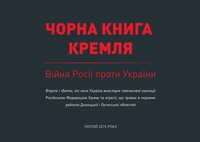 The next is the Joint Control Doctrine. It was used by the International Criminal Tribunal towards the former Yugoslavia in the case of Dusko Tadic. The Doctrine provides that the State and the individuals are responsible for the activities of third parties in case if they exercise joint control over the activities of these third parties, for example, financing, arming, feeding them. As noted above, Ukraine has evidence that Russia is arming and financing the militants of the “DNR” and “LPR”. Therefore, to establish Russia's and its special forces' responsibility we should refer to both these Doctrines: of Effective Control and of Joint Control.
The next is the Joint Control Doctrine. It was used by the International Criminal Tribunal towards the former Yugoslavia in the case of Dusko Tadic. The Doctrine provides that the State and the individuals are responsible for the activities of third parties in case if they exercise joint control over the activities of these third parties, for example, financing, arming, feeding them. As noted above, Ukraine has evidence that Russia is arming and financing the militants of the “DNR” and “LPR”. Therefore, to establish Russia's and its special forces' responsibility we should refer to both these Doctrines: of Effective Control and of Joint Control.
3. The international community's reaction to Russia's aggressive actions in the Donbas
One of the first political statements at the international level on the recognition of Russia's actions in the Donbas as aggressive ones was the statement by NATO Secretary General.
After an emergency meeting of the NATO-Ukraine Commission in August 2014, due to the escalation of Russia's armed attack in the East of Ukraine, NATO Secretary General A. Rasmussen described the invasion of the armed forces of the Russian Federation through the eastern Russian-Ukrainian state border as “a serious escalation of Russia's armed aggression against Ukraine”.
Ukraine at the official political level, recognized Russia an aggressor State only in January 2015 through the adoption by the Verkhovna Rada of Ukraine of the Resolution “On the Appeal of the Verkhovna Rada of Ukraine to the United Nations, the European Parliament, the Parliamentary Assembly of the Council of Europe, the NATO Parliamentary Assembly, the OSCE Parliamentary Assembly, the Parliamentary Assembly GUAM, the parliaments of the world on the recognition of the Russian Federation an aggressor-state”.
In June 2015, the OSCE Parliamentary Assembly adopted a Resolution on the missing persons in the Crimea and in the Ukrainian-Russian conflict, by which Russia was recognized an aggressor and occupier.
In July 2015, the OSCE Parliamentary Assembly adopted a Resolution on “The continuation of Clear, Gross and Uncorrected Violations by the Russian Federation of International Norms and Principles of the OSCE”. It clearly reads that Russia's actions in the Crimea and in the Donbas are acts of military aggression against Ukraine.
So, Ukraine, based on international law, recognizes actions of the Russian Federation as an aggression, but gradually regional organizations also take similar decisions. However, it should be noted that resolutions of regional organizations as well as of international ones, according to many lawyers, are part of the so-called “soft law”, which means they are not legally binding for execution, but are political documents. Although the fact of their adoption itself indicates certain tendencies and positions of states regarding certain issues.
4. Prospects for classification of Russia's actions as an act of aggression
Classification of Russia's actions as an act of aggression and taking coercive measures is the jurisdiction of the Security Council based on Article 39 of the UN Charter. The Security Council alone may decide which actions of a State constitute a violation of or pose a threat to peace, whether they are acts of aggression, and whether to take military enforcement actions on these grounds. Its decisions have legal rather than political power. However, based on the practice of decisions of the Security Council, it should be pointed out that it has never recognized any state as aggressor, let alone a State — its permanent member. It would just qualify the state's actions as a violation of peace, provision of armed pressure and take enforcement actions to restore international peace and security.
The Security Council's making a decision on recognition of Russia an aggressor and taking enforcement actions against it is impossible, because in this case Russia will use veto. However, Article 27 of the UN Charter clearly reads, “The country, which is party to the conflict, must abstain from voting on this issue in the Security Council.” But the paradox is that in order to recognize Russia a party to the conflict within the framework of this Article, it is also necessary to resort to a vote, and Russia will use its veto. Thus, there is a double veto. Such closure of this procedure demonstrates the existence of a crisis in the Security Council, which is not in a position today to solve the tasks of peace and security assigned to it by the Charter of the United Nations. Consequently, despite the possibility of a formal statement of compliance of the Russian Federation's actions with the definition of aggression, today there are no the UN Security Council's resolutions on this issue, making impossible the implementation of the Russian Federation's international responsibility in the form of sanctions used by the Security Council.
The UN General Assembly can make a political decision on the recognition of Russia an aggressor. As the Assembly has to discuss any question within the responsibility of the UN, that is a question of support for international peace and security. In accordance with Paragraph 2 of Article 11, the UN General Assembly has three options to use this right: to organize a discussion, to give advice or to inform on the need for specific events. At the same time it should be noted that today the UN General Assembly's resolutions are in the sphere of the so-called “soft law” and are not binding, that is, do not create legal consequences.
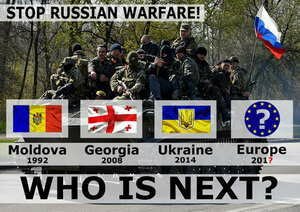 However, it is worth recalling UN GA's Resolution № 377 of 1950, which established the procedure for Unity for Peace. It reads that if there are grounds to believe that there is a threat to peace or an act of aggression is fixed, and the Security Council is unable to take a decision as a result of differences of opinion among the permanent members, the question shall be submitted to an extraordinary session of the General Assembly. It shall be convened within 24 hours after putting forward of such a demand by not fewer than by seven members of the Security Council or a majority of the General Assembly members. In this case, the Assembly can adopt recommendations on collective activities and in case of breach of peace or an act of aggression — on use of military force to maintain and restore international peace and security.
However, it is worth recalling UN GA's Resolution № 377 of 1950, which established the procedure for Unity for Peace. It reads that if there are grounds to believe that there is a threat to peace or an act of aggression is fixed, and the Security Council is unable to take a decision as a result of differences of opinion among the permanent members, the question shall be submitted to an extraordinary session of the General Assembly. It shall be convened within 24 hours after putting forward of such a demand by not fewer than by seven members of the Security Council or a majority of the General Assembly members. In this case, the Assembly can adopt recommendations on collective activities and in case of breach of peace or an act of aggression — on use of military force to maintain and restore international peace and security.
Permanent Representative of Ukraine to the UN Yuriy Sergeyev comments on the prospects for bypassing the Security Council's decision on Ukraine, “There is another, also theoretically possible option — to follow through the General Assembly, which requires 2/3 of votes in accordance with Resolution № 377”. At the same time, he states that even if Ukraine is supported by more than one hundred countries, soon another problem will arise: where to get the funds to implement the decision of the General Assembly, for example, to deploy a peacekeeping mission. But the question of classification of Russia's actions as an act of aggression can be done by bypassing the Security Council through the UN General Assembly.
The responsibility of the International Court of Justice includes making decisions on disputes between States and drawing advisory conclusions at the request of the Security Council, General Assembly and other UN bodies in the presence of the consent of the General Assembly. Prospects for the case of Ukraine against Russia are practically impossible, since the latter will not give its consent. Under the Charter of the UN ICJ, its competence can only be applied on the basis of the consent of the states. Such consent may be optional where the State makes a statement that it is subject to such competence. Also, the consent may be given on the basis of an agreement between the States which contains a provision on the compulsory jurisdiction of the court or on the basis of a Convention in which the State participates, but in this case, the UN ICJ must admit that this situation meets the scope of the Convention.
Russia is not the State that has declared its openness to the jurisdiction of the UN ICJ. Here again we can compare with the case of “Nicaragua against the United States”: Nicaragua's appeal was possible because the United States at the time of filing the case in the UN ICJ gave its consent to the jurisdiction of the Court in respect of itself. Between Ukraine and Russia, there is no agreement containing a provision on the possibility of appeal to the UN ICJ. And the use of a particular convention as grounds for appeal to the Court requires a detailed analysis of the leading legal experts, because the difficulty lies in the fact that the relevant scope of the convention should not only include the subject of the dispute — in this case, Russia's aggressive actions, its violation of Ukrainian border, interference in the Ukraine's internal affairs, violations of human rights — but it should contain also articles on settlement of disputes sent to the ICJ. According to the Judge Leonid Skotnikov, Russia recognizes the jurisdiction of the ICJ in accordance with the conventions which it has entered into with other countries if they have an article on settlement of disputes, which send the parties to the UN ICJ. Therefore, the prospect of the settlement of the situation between Ukraine and Russia through the proceedings in the ICJ is almost unreal.
It should also be noted that the ICJ in its decisions cannot, instead of the Security Council, take decisions on the recognition of a State an aggressor and on the use of military enforcement measures as it applies solely to the responsibility of the Security Council. Also ICJ following its decision, cannot oblige the Security Council to take an appropriate decision. Again we turn to the case of “Nicaragua against the United States,” where, according to the decision of the ICJ, the United States was not recognized an aggressor, even though its actions on the basis of the Resolution “Definition of Aggression” could be qualified as indirect aggression. But the United States was found to have violated the principles of the threat or use of force, non-interference in the internal affairs of Nicaragua.
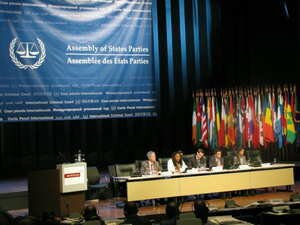 The UN ICJ can also give an advisory conclusion about Russia's actions in Ukraine. However, with such a request to the ICJ the UN authority should file a request. In case of such a consultative conclusion, the Court will establish a credible position on the legal interpretation of the Russian-Ukrainian conflict, but it will have no legal force.
The UN ICJ can also give an advisory conclusion about Russia's actions in Ukraine. However, with such a request to the ICJ the UN authority should file a request. In case of such a consultative conclusion, the Court will establish a credible position on the legal interpretation of the Russian-Ukrainian conflict, but it will have no legal force.
In the future, the International Criminal Court will be empowered to consider the question of aggression, but its jurisdiction does not apply to Ukraine or Russia, because none of them have joined the Rome Statute. Besides, the provisions of the Rome Statute for the Definition of Aggression (were introduced by the Resolution in 2010 in Kampala) have not entered into force yet, and this will happen only in 2017, that is, the question of military aggression is not so far included in the jurisdiction of the Court. But even if Ukraine (as an already participant of the Rome Statute) sent a complaint about the situation that has arisen in the Donbas due to Russia's aggression, the UN IJC would then only consider cases against individuals committing war crimes, crimes against humanity and would establish personal responsibility of offenders.
5. Conclusions
Now there is unquestioning legal basis for characterization of the Russian Federation's actions in the East of Ukraine as an act of aggression. The Verkhovna Rada has adopted a Resolution which recognizes Russia an aggressor. In addition, there are political decisions of the international community with respect to the characterization of Russia's actions in the Donbas as an aggression. In particular, the relevant resolutions have been adopted by the PACE and OSCE. However, such regulations do not provide for the legal consequences for the aggressor state.
Therefore, to address this issue, we need a qualified decision of the Security Council, which is called to guarantee peace and security. Such a decision cannot be taken because of Russia's (as a permanent member's) veto. In this case, there is a need to either reform the Security Council, or to use some other instruments of solving the conflict. To bypass the Security Council would be adoption of the UN General Assembly's Resolution on the basis of the procedure “Unity for Peace”.
Author:
Dovbenko M. analyst trainee FVІAC

